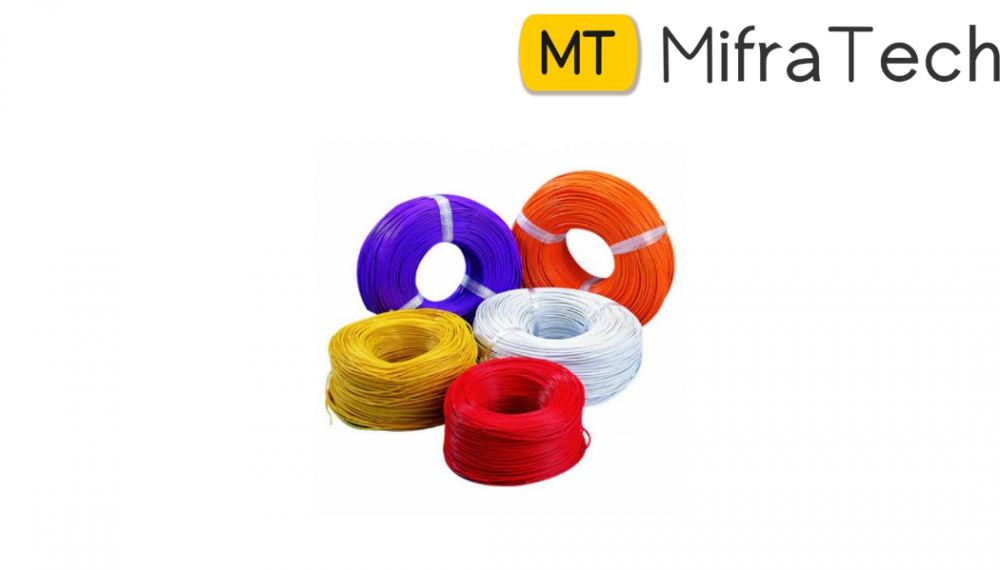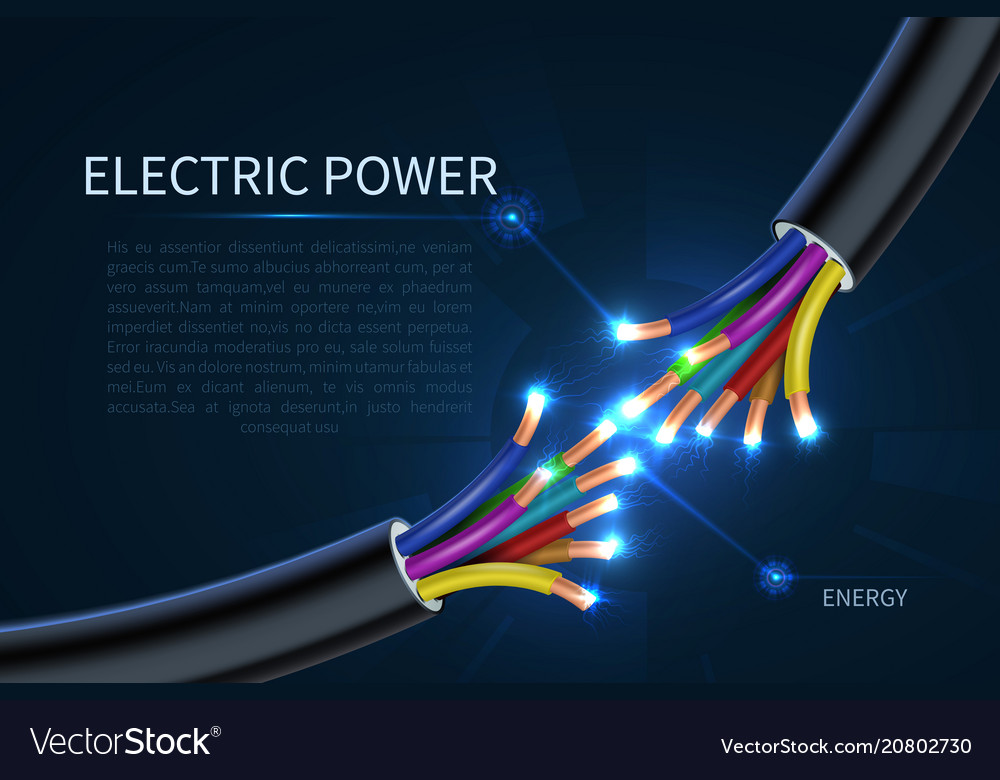


There are many different types of electronics cable that can be used in electronics equipment. Much of it comprises a single wire covered with insulation, but other types of wire are also used in large quantities.
The type of electronics cable or wire required depends upon the application. Some may require to be screened whereas others may need several wires in parallel to carry a data bus. Of course there are also many other types of wire that can be used according to the application.
There are several types of electronics cable or wire that can be used in electronics construction. Some of the major types are outlined below:
<
Each of these types of electronics cable or wire is used in a different type of application. By using the correct type of electronics cable it is often possible to save a considerable amount of time during the electronics construction phase of a project, or ensure that the right performance is obtained.
This type of wire is normally thought of as being a single wire covered in some form of insulation. It is normally used for point to point connections, or a variety of wires may be used for different connections. Under these circumstances the wires may be bundled together ina wiring loom.
Further details of the types of wire that may be used can be found in the "Electronics connecting wire" page that can be accessed through the "Related Articles" list that can be found below the main menu on the left hand side of this page.
RF coaxial cable is used to carry radio frequency signals. The cable is designed specifically for radio signals and its properties enable it to carry them with a minimum amount of loss.
As the name implies a coax or coaxial feeder consists of concentric circular layers. The inner most layer is a circular cross section conductor. Outside this is an insulating dielectric which spaces the inner conductor from an outer shielding conductor. This is normally in the form of a braid. The outermost layer is a protective sheath.
The coaxial cable transmits radio frequency signals from one location to another with a minimum level of loss. The signal propagates along the cable and is confined within the outer conductor which is normally a braid. In this way no power can escape or additional signals be picked up.
Coax cable is the most widely used form of feeder for RF signals. Although other forms of feeder are used in some circumstances, coax is very convenient and easy to use and is tolerant of being taken through a variety of environments.An RF feeder has what is known as a characteristic impedance - this is the impedance a source would see if it fed its power into an infinitely long length of the feeder. To obtain maximum power transfer, the source impedance of the generator, the characteristic impedance of the feeder and the impedance of the load should all be the same. The most common values for impedance of RF coax cable is 50 ohms (used for commercial / industrial RF applications as well as CB and ham radio) and 75 ohms which is the standard for domestic television and hi-fi antenna systems.
Screened cable is very different to coaxial cable in its properties. It cannot be used for carrying radio frequency signals as its properties are not commensurate with this application.
Typically screened cable is used for applications where one or more wires needs to have a screen to protect it from stray radiation. It is widely used for low level audio and may be used for microphones, and even for connections between phono plugs for audio systems.
For some audio applications, two wires may be used to provide a balanced system where neither wire is earthed. This additionally helps ensure that any pickup is reduced. If any signals are picked up, then they will appear on both lines and the input to the amplifier will not see these - it should only respond to any differences between the two lines. However an additional screen ensures that the maximum amount of immunity to stray pick-up is provided.
With the large usage of computers and computer technology, there is an increasing requirement to send data from one point to another. There are many types of data cable in use.
The main requirement of a data cable is that it must be able to transfer data over the length with the minimum number of data errors at the receiving end. This means that there must be a minimum of radiation of the signal and pick-up of interference and also the waveform must remain intact. To achieve this a twisted wire format is normally used. This protects the wire from stray pick-up and radiation while still enabling the waveform to travel along it intact.
A variety of forms of data cable assembly can be bought ready made up. RS232 cables are often available along with other types. Possibly the most widely used cable these days is for Ethernet style applications and the "Cat 5" or "Cat 5e" formats are easily available at very competitive process. These cables can be used for many of the computer network style connections.
It can be seen that there is a wide variety of different types of electronics cable. Each type is intended for a different use and can be used to great advantage in a different application. Although basic connecting wire is probably the most widely used, coax cable, screened cable, ribbon cable, data cabling and other types really come into their own for their particular applications.

keep in touch with our social media links as mentioned below
Mifratech Note : Find the best solution for electronics components and technical projects ideas
Contact for more information : [email protected] / 080-73744810 / 9972364704
mifratech instagram : https://www.instagram.com/mifratech/
mifratech twitter account : https://twitter.com/mifratech
https://www.mifratech.com/public/
https://www.mifratech.com/public/
https://www.facebook.com/mifratech.lab
#bestelectroniccomponentsnearme #bestcomponentsshoparoundme #topeelectroniccomponentsshop
#lcdinterfacingwithaurduinouno #lcdinterfacingwithnano #lcdinterfacingwithnodemcu #lcdinterfacingwithraspbeerpi #lcdinterfaingwithnodemcuinbreadeboard #microsdcardmodule
#allengineeringstudentsprojectscomponentsavailable #wholesalepricecomponents #allelectroniccomponentsavailable #bestpricecomponentsstore #allroboticcomponentsavailable #allelectronicscomponentsavailablelike #ARDUINO UNO #RASPBERRYPI #ESP32 #ESP8266 #RFIDMODULERC522 #4X4KEYPAD #microsdcardmodule #cp2102 #arduinopromini #nodemcu #drivercircuit #vibrationsensor #rainsensor #bmp180 #bmp280interfacingwitharduino #ADXL335ACCELEROMETER #soundsensor #5voltsadapter #12voltsadapters #wifismartcamera #moistersensor #watersensor #eyeblinksensor #ultrasonicsensorhcsr04 #currentsensor #voltagesensor #ecgsensormoduleAD8232 #PIRsensor #IRsensor #irproximitysensor #DS18B20tempraturesensor #dht22tempraturesensor #dht11temperaturesensorandhumiditysensor #flamesensor #touchsensor #fluxsensor #allsensorsavailablesofthisstore #9voltsbattery #9voltsbatteryclip #lithineumbatterycell #3.7lithiniumbattery #duresellbattery #16x2LCDdisplay #20x4LCDdisplay #I2Cmodule #LCDkeypadshield #DC-DCconverter #ultrasonicholder #0.98OLEDdisplay #rotaryencoder #12voltsbuzzer #5voltsbuzzer #gassensor #metaldetectorsensor #1channelrelaymodule #2channelrelaymodule #4channelrelaymodule #8channelrelaymodule #16channelrelaymodule #allvaluesofresistor #allvaluesofcapacitors #allvaluesofmosfet #allvaluesofIC`s #3mmleds #flowratesensor #pumpsensormodule #allvaluesofdcmotors #bomotors #bowheels #roboticmotors #roboticwheels #roboticchassis #roboticclamps #roboticscrow #allkindofroboparts #jumperwires #generalpurposewire #solderingirin #solderinglead #solderingflux #multimeter #glowgun #glowstick #cutter #tipesofpushbutton #slidebutton #onofbutton #tongleswitches #alltypesofswitches #alltypesofarduinocables #alltypesofcables #allsizeofsolarpanels #scrowdriverset #complatelyelectroniccomponentsstore